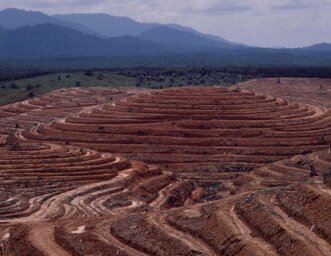FFD 2009 Disclosure Request
The aim of the FFD Project is to objectively determine how an organisation approaches management of any exposure to Forest Risk Commodities (FRCs). At this stage the majority of companies are at an early stage of development in this area. So in 2009 FFD did not seek quantification of FRC consumption, i.e. the actual commodity footprint in cubic metres or tonnes. Instead we have used classic management process information as a simple proxy to determine the state of engagement.
The 2009 FFD Disclosure Questionnaire itself is broken down into eleven parts, which mirror a best practice process flow for management of FRCs. Companies familiar with ISO 14001, formal HSE procedures, or even corporate risk management systems, should find this format very straightforward to follow. This format also has the added bonus that for companies completely new to these issues, the questionnaire, supported by The Guide to Forest Footprint Disclosure, provides a speedy introduction to FRC issues management.
A number of pilot companies completed a draft questionnaire and their helpful feedback was noted and built into the final guidance documentation. Additional feedback is always welcome and companies that need support in addressing the issues FFD raises are invited to dialogue with FFD on how best to move forward at .
The Scoring Methodology for the 2009 Disclosure Request was designed to allow all companies to gain recognition for their approach, irrespective of their level of sophistication or the number of FRCs they are handling. We understand that this is a journey and that some FRC certification options are more mature than others. This has been reflected in the scoring process.
As to the Questionnaire sections themselves, ‘Deforestation Risk Assessment’ is a key stage covering profiling materials, risk assessment and traceability and supplier engagement and represents 24% of the total score. ‘Management of FRC Issues’ covers making public commitments, standards setting, targeting, performance improvement and development and support of the supply base and delivers the bulk of available marks at 48%. Another crucial element of the assessment process is ‘Coverage’, which represents 13% of available marks. This part of the questionnaire allows FFD to identify which companies are being overly selective in their management of FRC risk and those at risk of over-focusing on a small sub-set of their impacts. ‘Reporting, Governance, Risks and Opportunities Identification’, topics all especially important to the asset management community, share the remaining 15% of available marks.
The 2009 FFD Rating Matrix details this in full, including scoring by individual question and the criteria in use for discretionary points.
During the process of scoring responses it became clear that FRC Bio-fuel issues could not be given equal status across sectors due to regulatory commitments in many territories (including both the EU and the US) to mix regular and bio-fuel derived feedstocks. The majority of companies, outside of those in energy or those in Basic Materials sectors providing feedstocks, stated that they have very little control over which mixtures are available. So we sought to respond in the 2009 scoring to reflect this and have elected to move all biofuel related commodity scores to discretionary status. We believe this is the fairest response to often unwelcome legislation while still providing credit to companies that have gone the extra mile and generated a biofuel strategy regardless of their place in the value chain. We would appreciate feedback on the validity of this response.
Going forward, how will the FFD process evolve? As well as asking for disclosure from a wider geographic spread, we will refine the Disclosure Request. In later years FFD will be asking the banking and wider financial community how it handles risk management of FRCs in both its project finance and lending activities.
This year, quantified footprint information was offered by only a small percentage of respondents in year one and for some FRCs only. Generally those responding were also the best in class companies. The FFD process is about sharing that excellence and mainstreaming it throughout all industries in the years to come and there will be more emphasis on providing quantified information. We are also acutely aware of concerns that without third party verification of the information provided to FFD, some companies may exaggerate or indeed under-report their level of engagement. As awareness builds of the FRC challenge, we hope that companies will indeed seek second party assessments and verification.
Strategic Environmental Consulting, United Kingdom

Related Links
> 2009 Questionnaire | 2009 Guide to Forest Footprinting
> The Scoring Methodology for the 2009 Disclosure Request
> Sectors and companies selected in 2009
> The 2009 Annual Review







